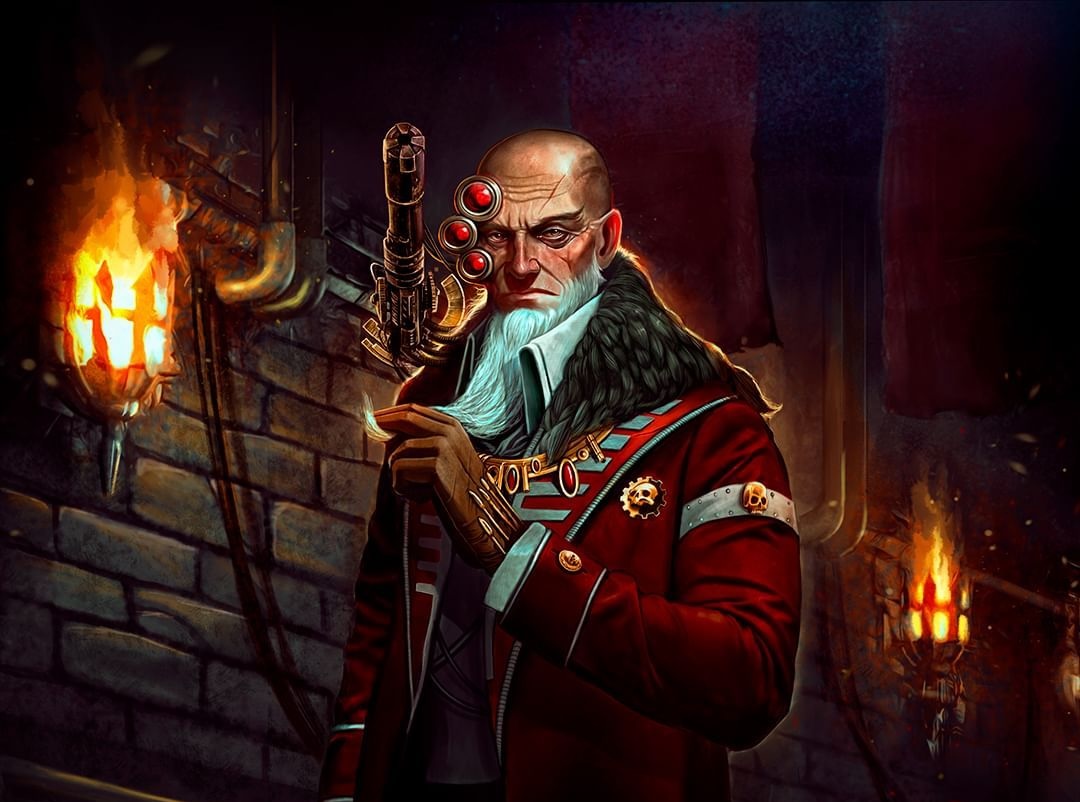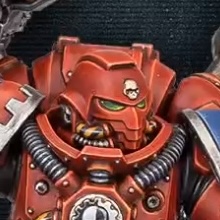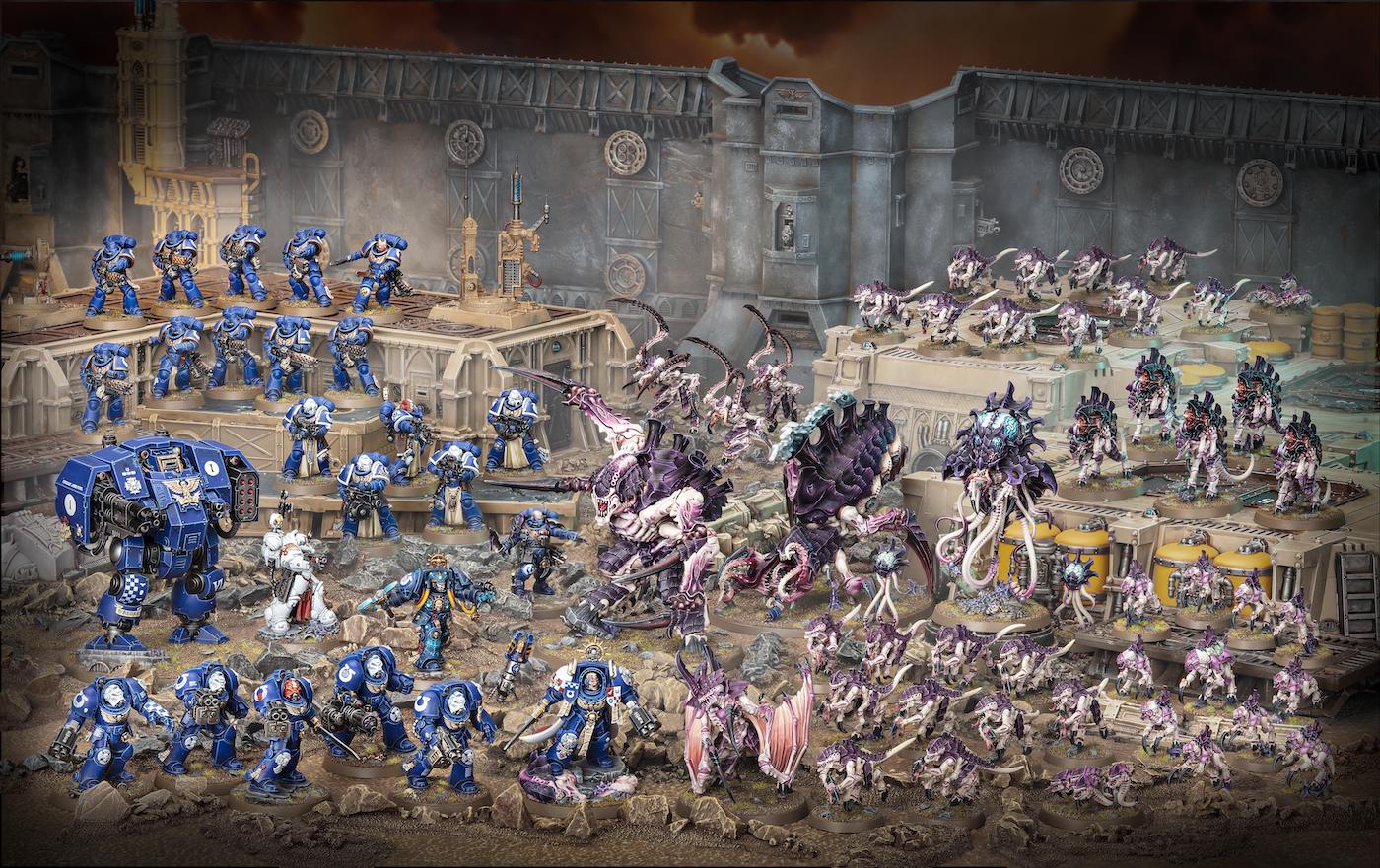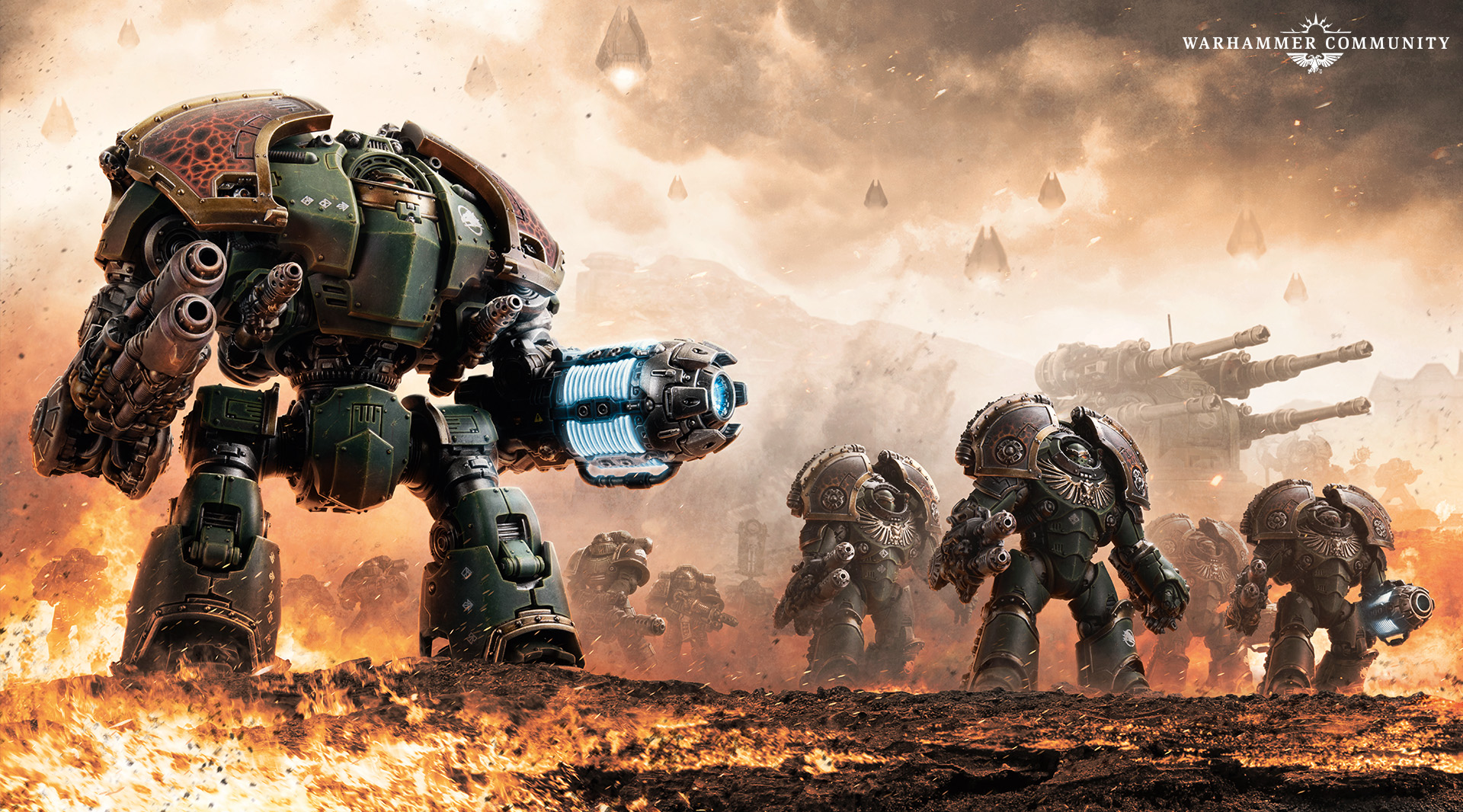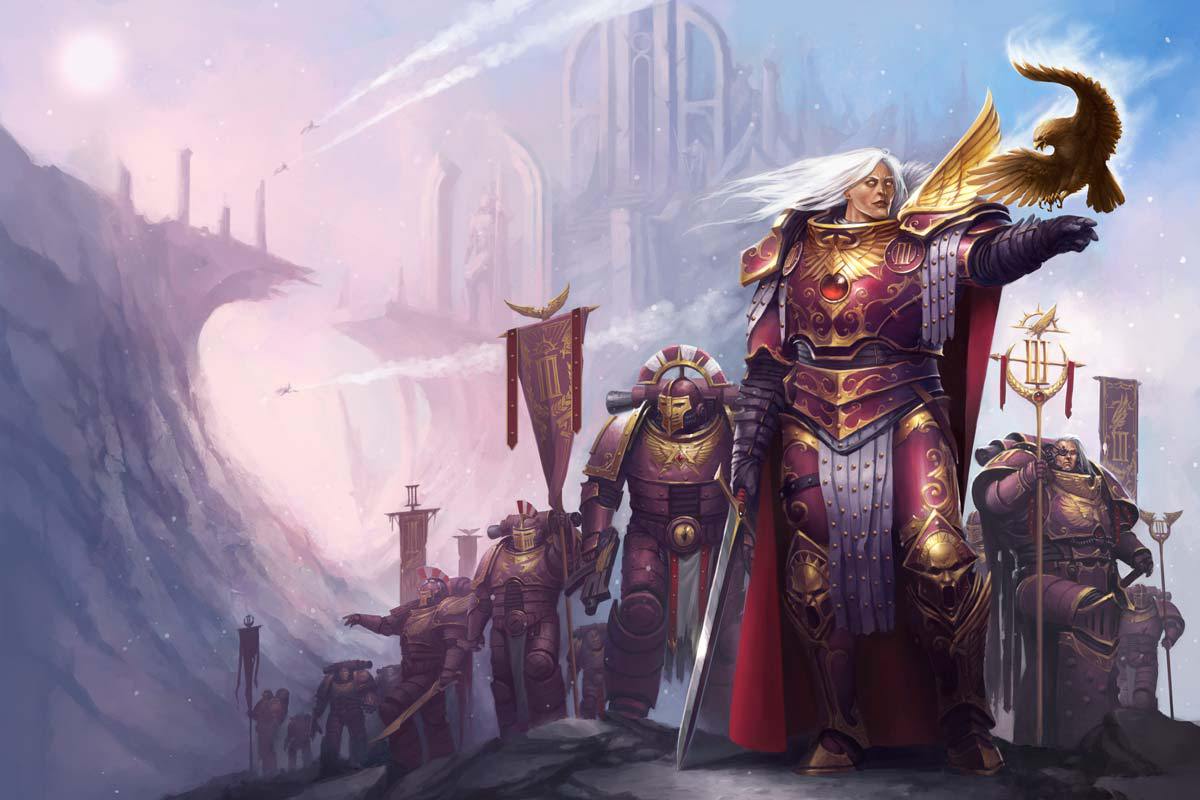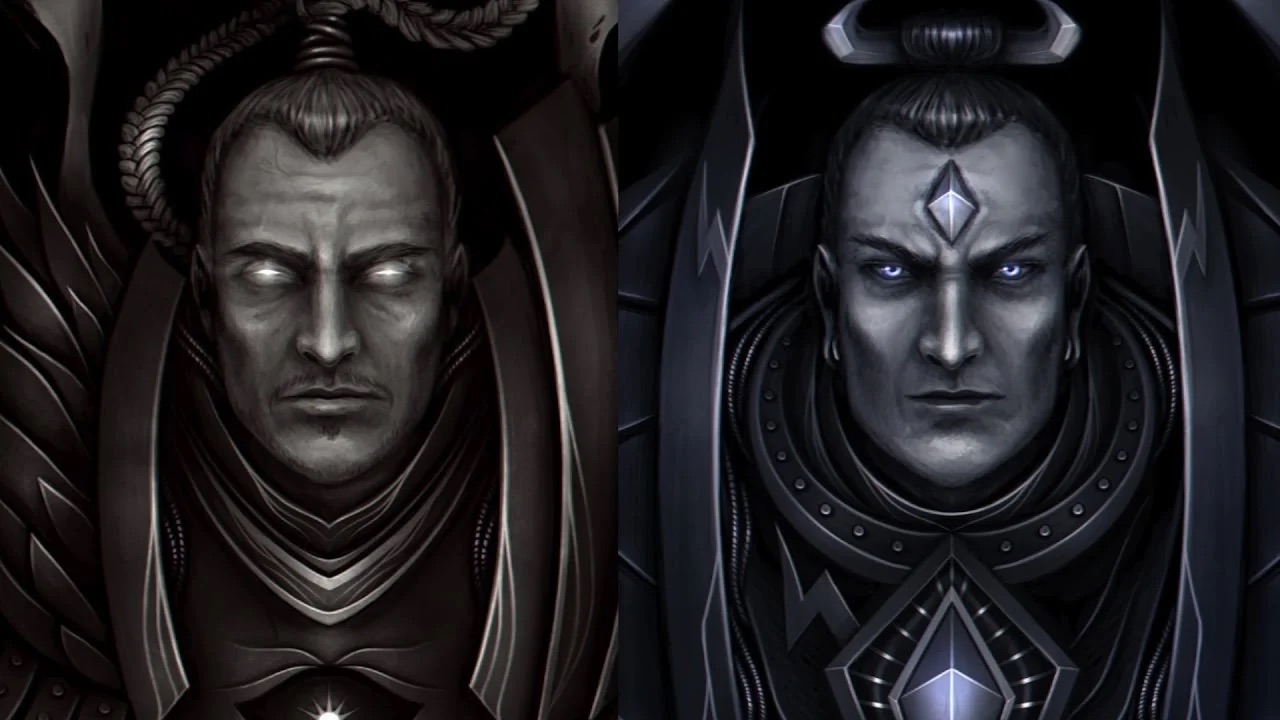Introduction and Background
In the vast archives of the Imperium of Man, few names evoke as much reverence among the tech-priests of the Adeptus Mechanicus as Arkhan Land. A legendary technoarcheologist of the ancient Mechanicum, Land’s discoveries during the early days of the Imperium would revolutionize Imperial technology and continue to shape the grim darkness of the 41st Millennium. His name lives on through the iconic vehicles that bear his mark—machines of war and peace that have served humanity for over ten thousand years.
Arkhan Land was no ordinary magos of the Mechanicum. Even in an organization known for its eccentric adherents, Land stood out as a figure of peculiar habits and remarkable intellect. Unlike many of his colleagues who embraced extensive bionic enhancements, Land maintained a largely human appearance, with few visible augmentations. This reluctance to replace flesh with machine parts was just one of many idiosyncrasies that made him a subject of fascination and occasional derision among his peers.
Historical accounts of Land often focus as much on his personal eccentricities as his intellectual achievements. Marble etchings on Mars depict the great Tech-priest taking daily walks among the sky vaults of the Sierra Planum accompanied by his pet psyber-monkey, Sapien—a cybernetically enhanced simian that served as both companion and assistant. Other records make frequent mention of his collection of ostentatious wigs, worn to conceal the baldness that afflicted him from an early age. These peculiarities, combined with his undeniable genius, created an aura of mystique around the man that persists to this day.
What set Land apart from his contemporaries was his extraordinary cognitive abilities, evident from his earliest years. By the age of five, he could reportedly speak over fifty different dialects, a feat that hinted at the remarkable mind that would later unravel technological mysteries that had remained hidden for millennia. As he matured, Land developed an unparalleled talent for navigating the hazardous catacombs and tech-vaults beneath Mars’ surface, venturing into areas where others dared not tread.
Land’s relationship with the broader Mechanicum was complex. While universally acknowledged as a genius, his arrogance and disrespect for authority made him a controversial figure. He showed little patience for those he deemed intellectually inferior, which included most of his colleagues. This attitude earned him few friends but many admirers, as his results spoke for themselves. Even those who found his personality grating could not deny the value of his contributions to the Mechanicum and, by extension, to the nascent Imperium of Man.
The technoarcheologist’s greatest claim to fame came during the Great Crusade in the late 30th Millennium, when the Emperor’s forces were reuniting the scattered worlds of humanity. It was during this period of expansion and discovery that Land would make his most significant contributions to Imperial technology—contributions that would earn him a place in history and ensure that his name would be remembered for millennia to come. His expedition into the Librarius Omnis, a vast repository of ancient knowledge on Mars, would yield discoveries that would transform the Imperium’s military and civilian infrastructure alike.
What drove Land to explore the dangerous depths of the Librarius Omnis remains a subject of debate among Imperial historians. Some suggest it was pure intellectual curiosity—the desire to uncover the technological wonders of humanity’s past. Others believe he sought to elevate his status within the Mechanicum through spectacular discoveries. Whatever his motivations, the results of his three-year expedition into that labyrinthine archive would exceed all expectations and cement his legacy as one of the greatest minds of his age.
Major Discoveries
The crowning achievement of Arkhan Land’s career was his famous expedition into the Librarius Omnis, a vast and perilous repository of ancient knowledge that sprawled beneath the surface of Mars. For three standard years, from approximately 805.M30 to 808.M30, Land led a team of explorers through the labyrinthine catacombs of this continent-spanning edifice. While his primary goal—to discover a functioning Standard Template Construct (STC) database—remained unfulfilled, the expedition yielded three technological treasures that would revolutionize Imperial technology for millennia to come.
The first and perhaps most iconic of Land’s discoveries was a near-complete dataslab containing STC information for a heavily armored main battle tank. This vehicle would initially be designated “Land’s Raider-Pattern Main Battle Tank,” though history would eventually shorten this to simply “Land Raider.” The original pattern, later known as the Land Raider Proteus, served as the Legiones Astartes’ primary battle tank during the early years of the Great Crusade. Though the design had limitations—notably an inefficient internal storage layout and a rear-mounted entry hatch that complicated rapid deployment—it provided the foundation for numerous variants that would follow.
Over the centuries, the Land Raider design would evolve significantly. During the Great Crusade and subsequent Horus Heresy, it would be modified into the Spartan Assault Tank, and later the Land Raider Phobos that remains in service in the 41st Millennium. The vehicle’s combination of heavy armor, formidable firepower, and transport capacity has made it an enduring symbol of Imperial might, particularly among the Space Marine Chapters who employ it as their primary assault transport. Land himself was reportedly displeased with the simplification of the vehicle’s name, even writing an essay titled “Worthy Notes and Treatises of Direct Relevance to Land’s Raider-Pattern Main Battle Tank: The Rebirth of an Ancient Miracle” to argue against the shortened designation.
The second major discovery from Land’s expedition was information on rare anti-gravitic plates and theories on their application. This knowledge led to the development of the “Land’s Speeder,” later known simply as the Land Speeder. These swift, hovering vehicles provided Imperial forces with unprecedented mobility, allowing them to traverse difficult terrain with ease and conduct rapid reconnaissance or strike missions. The anti-gravitic technology recovered by Land represents one of the few examples of such advanced systems still in use by the Imperium; without his discovery, it is widely believed that anti-gravitic vehicles would have disappeared entirely from the Imperial arsenal.
Tragically, Land did not live to see the widespread implementation of the Land Speeder. Production of these vehicles began in earnest only after his disappearance, but they quickly became a staple of Space Marine forces. The technology also found application in more specialized vehicles, such as the Legio Custodes’ Caladius Grav-Tank and their Paragon Pattern Jetbikes, both of which Land helped design during the Horus Heresy.
Land’s third major discovery, though less celebrated in military histories, may have had the most far-reaching impact on Imperial civilization. The Land Crawler, another STC construct recovered during his expedition, was not a war machine but an agricultural vehicle. Designed for versatility and ease of maintenance, the Land Crawler has been produced in countless billions of units and deployed across virtually every Agri-world in the Imperium. Its simple, robust design makes it ideal for farming operations, though it has frequently been pressed into service as an infantry support vehicle, artillery tow vehicle, ambulance, and general transport when needed.
Some Imperial historians argue that the humble Land Crawler represents Land’s most important contribution to humanity. As one scholar famously noted, “Even Space Marines need to eat.” The reliable agricultural machinery has helped sustain the Imperium’s vast population for ten millennia, quietly serving as the backbone of food production across countless worlds.
Beyond these three primary discoveries, Land also uncovered information on the Mars Universal Land Engine (M.U.L.E.), which would later be developed into the Onager Dunecrawler. This walking vehicle was initially designed as a workhorse to safely transport personnel across the Martian wastes, but its design proved so successful that it was eventually weaponized, equipped with Emanatus force shielding, and mass-produced for frontline service. Land reportedly based its design on what he believed to be an ancient Terran beast of burden, though no records of such creatures exist in Imperial archives.
What makes Land’s discoveries particularly remarkable is not just their technological significance but their continued relevance. While much of humanity’s advanced technology has been lost or forgotten over the millennia, the vehicles and systems he recovered remain in active production and use. This longevity speaks to both the brilliance of their original design and Land’s skill in interpreting and adapting the fragmentary information he discovered.
Role During the Horus Heresy and Legacy
Arkhan Land’s significance to the Imperium extended far beyond his archaeological discoveries. As the galaxy descended into the catastrophic civil war known as the Horus Heresy, Land’s expertise would be called upon for matters of the highest imperial importance, bringing him into direct contact with the Emperor of Mankind himself.
One of the most notable instances of Land’s service to the Emperor came shortly after the recovery of the Primarch Angron. The Emperor had observed that his gene-son had been irreversibly altered by cybernetic implants known as the Butcher’s Nails, which had been forcibly installed by the slave lords of Nuceria to increase aggression and combat effectiveness. Only Land could confirm the Emperor’s suspicion that these devices were based on the ancient cruciamen, a forbidden technology referenced in profane texts within the Hexarchion Vaults. During this collaboration, Land gained rare insight into the Emperor’s true perspective on the Primarchs—learning that the Master of Mankind viewed them not as sons but as sophisticated tools and weapons without emotional attachment.
When the Heresy erupted and Mars fell to the Dark Mechanicum, Land’s loyalty to the Emperor—whom he revered as the Omnissiah—never wavered. As traitor forces overran the red planet, Land was evacuated to Terra on the orders of First Captain Sigismund of the Imperial Fists. The extraction was nearly thwarted when a Vorax Class Robot was dispatched to eliminate Land, but the sacrifice of Sergeant Nicanor Tullus allowed the technoarcheologist and other loyalist Tech-Priests to escape.
On Terra, despite mutual disdain between himself and Fabricator General Kane, Land’s expertise with forbidden weaponry from the Hexarchion Vaults proved invaluable. He assisted in the ascension of Magos Domina Hieronyma into the war construct known as the Archimandrite, and accompanied this formidable creation into the Emperor’s webway project. During this campaign, Land brought his personal Grav-Raider and his psyber-monkey Sapien, though his first encounter with the daemonic entities pouring through the webway breach visibly shook even his rational mind.
In the later stages of the Heresy, Land formed an unlikely friendship with Dominion Zephon of the Blood Angels, whose bionic limbs were being constantly rejected by his body. Land’s solution was characteristically radical—he inserted fragments of Dark Age of Technology-era Artificial Intelligence into Zephon’s limbs and brain, successfully bypassing the rejection. This operation exemplified Land’s pragmatic approach to technology, willing to employ forbidden methods when necessary.
During the climactic Siege of Terra, Land initially focused on self-preservation, declaring himself “too important to die.” However, when pressed into service for the final defense of the Eternity Gate, and moved by Primarch Sanguinius’s inspiring presence, Land showed unexpected courage. Charged by Zephon with protecting three Blood Angels thralls, Land fought bravely despite his fear. Though two of the thralls perished and his beloved psyber-monkey Sapien was killed by the World Eater Kargos Bloodspitter, Land ultimately survived the siege and made it into the Sanctum Imperialis as the Eternity Gate sealed.
Land’s ultimate fate remains one of the enduring mysteries of Imperial history. Records indicate he embarked on a second expedition into the Librarius Omnis, but never returned. His vox diary, discovered two centuries later, suggests that he and his team were systematically eliminated by some unknown predator lurking in the ancient repository. Scholarly debate continues as to whether this entity was a living creature, a psychic manifestation, or perhaps even a sentient virus—a grim reminder that the technological wonders of humanity’s past often come with deadly guardians.
The legacy of Arkhan Land extends far beyond his lifetime through the sub-cult within the Adeptus Mechanicus known as the Landites or Landists. These devoted followers seek to continue his work, researching potential STC variants of his discoveries and occasionally developing innovations such as the Land Raider Prometheus. The inner circle of this cult, which includes senior Adeptus Mechanicus Artisans, is rumored to possess evidence of entirely new vehicle designs derived from Land’s work, though they keep such discoveries closely guarded.
The Landist cult’s research has not been without controversy. Their esoteric studies have suggested the existence of an armored vehicle from the Great Crusade era that was heavier than a Predator but lighter than a Land Raider, with system compatibilities that could help reconstruct this missing link in Imperial armor. Such claims have met with skepticism and even persecution—in the 39th Millennium, several Landist cult members were tried as Hereteks and condemned to Arco-flagellation for their theories.
Land’s influence on Imperial technology remains profound even in the 41st Millennium. Beyond the vehicles that bear his name, his methodologies and approaches to technological recovery continue to inspire Adeptus Mechanicus explorators. The renowned Archmagos Belisarius Cawl, perhaps the greatest technological innovator of the modern Imperium, has memories of Land from before the Horus Heresy and his strange simian familiar. Cawl recalls that Land was never satisfied with the naming of his discoveries, particularly objecting to the term “Land Raider” rather than the full “Land’s Raider-Pattern Main Battle Tank.”
This peculiar concern with nomenclature reflects Land’s complex personality—a brilliant mind whose eccentricities were tolerated because of his extraordinary contributions. In many ways, Land embodied both the greatest virtues and the most pronounced flaws of the Mechanicum: unparalleled technical acumen paired with personal idiosyncrasies that sometimes bordered on the incomprehensible to ordinary humans.
Conclusion
In the annals of the Imperium’s technological history, few figures loom as large as Arkhan Land. His expeditions into the Librarius Omnis yielded discoveries that continue to shape the battlefield and civilian life alike in the 41st Millennium, ten thousand years after his mysterious disappearance. The Land Raider, Land Speeder, and Land Crawler stand as enduring testaments to his genius—machines that have served humanity through its darkest hours and across countless worlds.
What distinguishes Land from many of his contemporaries in the Mechanicum was his unique approach to technological recovery. While many tech-priests were content to worship technology without truly understanding it, Land possessed both the intellectual capacity and the courage to delve deeper, to seek comprehension rather than mere veneration. This approach was not without risk, as his final fate attests, but it yielded results that a more cautious methodology might never have achieved.
The paradox of Arkhan Land lies in how his personal eccentricities contrast with his monumental contributions. Here was a man known as much for his collection of ostentatious wigs and his cybernetic pet monkey as for his technological discoveries. His arrogance and disregard for authority might have made him an outcast in any other organization, yet the Mechanicum tolerated these quirks because his genius was simply too valuable to lose. In this, Land embodies the complex relationship between individual brilliance and institutional structure that has characterized the Adeptus Mechanicus throughout its history.
Land’s interactions with the Emperor provide rare glimpses into the Master of Mankind’s true nature. The revelation that the Emperor viewed his Primarchs as tools rather than sons, explained through the ancient parable of Pinocchio, offers a sobering perspective on the foundation of the Imperium itself. That Land was trusted with such intimate knowledge speaks to his importance in the Emperor’s grand designs, even if he was never among the most politically powerful figures of his era.
The continued existence of the Landites sub-cult demonstrates how Land’s influence extends far beyond the tangible artifacts he recovered. His methodologies, his approach to technological exploration, and even his peculiar obsessions have inspired generations of tech-priests to follow in his footsteps. Though some have been persecuted as hereteks for their devotion to his teachings, the persistence of this movement across millennia speaks to the enduring power of Land’s legacy.
Perhaps the most remarkable aspect of Land’s story is how his name has become immortalized in Imperial nomenclature, despite his own objections to the simplification of his discoveries’ designations. The Land Raider, Land Speeder, and Land Crawler are known across the galaxy, their names invoking their discoverer with each utterance. Few individuals in Imperial history have achieved such linguistic immortality—a fitting tribute to a man whose work has saved countless lives and enabled innumerable Imperial victories.
In the grim darkness of the far future, where knowledge is often lost rather than gained and technological regression is more common than advancement, Arkhan Land represents a rare beacon of innovation and discovery. His willingness to venture into the unknown, to risk everything in pursuit of humanity’s lost technological heritage, embodies the finest traditions of the Adeptus Mechanicus. Though his methods were unorthodox and his personality difficult, his contributions to the Imperium’s technological arsenal have proven invaluable in humanity’s ongoing struggle for survival.
As the Imperium continues to face threats from within and without, the vehicles and technologies that bear Land’s name remain on the front lines, defending humanity just as they have for ten millennia. In this way, though Arkhan Land himself may have vanished into the labyrinthine depths of the Librarius Omnis, his legacy endures—in the rumble of Land Raider engines advancing across alien worlds, in the whine of Land Speeder anti-grav plates skimming over battlefield debris, and in the steady toil of Land Crawlers cultivating the crops that feed the Imperium’s teeming billions.
In the final analysis, Arkhan Land exemplifies both the heights to which human ingenuity can soar and the dangers that await those who delve too deeply into forgotten knowledge. His story serves as both inspiration and warning to those who would follow in his footsteps, a complex legacy befitting a complex man whose discoveries continue to shape the destiny of mankind among the stars.
